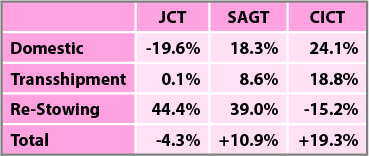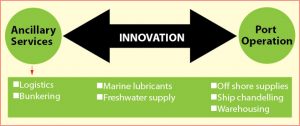Originally appeared on The Morning
By Dhananath Fernando
There have been many sentiments expressed on social media that Sri Lanka did not have luck in the recent past. Adverse weather, a third wave of Covid-19, and the sinking ship are just the most recent incidents from a much longer list. I was reminded of the meaning of luck when I was watching a documentary on Hollywood star Will Smith. Smith recalled his father’s advice on his successful career from his humble beginnings. “There is nothing called luck. Even if there is anything called ‘luck’ it is where opportunity meets preparedness.” Smith recalled how his father used to call him at 3 a.m. after seeing his box office numbers.
When I think about Sri Lanka; it is true we really haven’t had any luck for the last decade, but I believe it is simply because we haven’t been prepared. So when the opportunity comes or even when a crisis occurs, we are not prepared. The delay in preparing our policies costs us each time.
Reforms in the shipping and maritime industry is one such area of policy reform that we have postponed for too long. With the X-Press Pearl sinking near the “Pearl of the Indian Ocean” in our territorial waters, it is clear that the economics and our policy of a maritime hub have to be re-evaluated.
One may be surprised at the connection I am implying between a fire in a feeder vessel and the country’s shipping and marine policy, and one may even wonder what economics has to do with it. Whilst it is true that there is no recipe or economic model to douse a fire, economic policy can create an economic ecosystem where we have many firefighters, technology, and partners capable of dismantling an emergency of this scale or even at a bigger scale. If we did have such a policy, it could have presented may options, which in turn could have helped us avoid such a catastrophe for the economy, our invaluable marine environment, and our pristine beaches.
How good policy could have helped
An incident like an emergency fire and an event of this scale and the ability to avoid it will undoubtedly have numerous variables. It is a rare incident. There are thousands of feeder vessels and mainliners passing our Colombo Harbour and Sri Lanka ranks 24th on the list of “Best Container Terminals” in the world, so how is it that we did not have a system in place to fight a fire? This is a question we have to ask ourselves as a nation aspiring to become the centre of the Silk Route.
The adverse monsoonal weather and the Indian fire brigade vessels taking about two to three days to arrive, have fuelled discussions surrounding “luck”. However, something that should be explored immediately is why Sri Lanka did not have sufficient auxiliary services such as maritime fire brigade services, especially in a backdrop where the Port of Colombo is a regional transhipment hub.
It is not a question of our commitment to overcome this particular emergency but about the absence of policy to bring in technology and international businesses to arrest the situation. Undoubtedly, it is one out of many alternatives. There are incidents where even with superior technology, ships have been sunk into deep depths.
The economic argument brings in the question of what alternatives could have been available to us to control the fire and avoid damage to marine life. The Sri Lanka Port Authority Fire Brigade and Sri Lanka Air Force did their best to stop the fire at its initial stages. In one reel of footage it was clear the officer in a helicopter was throwing some chemicals from bags to douse the fire. While their efforts are appreciated, in the modern world, there are more advanced helicopters, aircraft, and vessels for fire-fighting, and our Air Force helicopters or Navy vessels are not crafted to fight a fire of that scale. In the industry of shipping there are more and more companies that provide such facilities. The shipping industry is an ecosystem and container transhipment is just a one tiny part of it.
It is easy to point fingers at the Government and ask why it can’t have such high-tech vessels and aircraft to combat fires at sea. The answer is simply that it is not the Government’s responsibility to douse fires nor does our Government have the money to make such massive investments. But it is the policymakers’ responsibility to create a business environment in the shipping industry where such supportive services can be established within our country.
There are many reasons why such companies do not establish their businesses in Sri Lanka. One main reason is that there is no reason for smaller, supportive businesses to enter the Sri Lankan market when none of the bigger shipping companies or principals are based in Sri Lanka. Then, we have to ask the question why the main shipping companies or giant players are not entering the Sri Lankan market. The reason is there is a law that 51% of the ownership of the company has to be kept with a local agency. There is no reason for a globally reputed big shipping company to enter Sri Lanka by offering 51% of the ownership to a local company where there are many better options available in the region and globally.
As a result of Sri Lanka not transforming to a maritime hub because it is sticking to its archaic laws, none of the advanced technologies or support services that exist in the industry will enter Sri Lanka, and we will have the same discussion even in five years unless the reforms are made.
Our snail’s pace movement in a dynamic industry has driven Sri Lanka away from becoming a maritime hub and we have become just a port with high container transhipment volumes – which is also now coming to a saturation with delays in operationalising the East and West Container Terminals. The lobbying against reforming these laws is very high, as there are many beneficiaries in the current system. Policymakers who attempted to do the reforms have failed or are set to fail.
There has been another discussion on getting a reasonable insurance claim for the damages caused to our marine environment through this recent incident. Some policymakers even mentioned that the claim will be supported to overcome national financial difficulties. However, we have to re-evaluate whether our policymakers have enacted the supporting legislations on global conventions under the International Maritime Organisation, in our Parliament. Since the ship is still within our territorial waters, it is the domestic legal framework that the shipping company has to abide by. But without the necessary legal framework in place to become a maritime hub, facing such incidents in Sri Lanka with the big insurance companies and their experienced lawyers will be challenging. They will always find legal reasons to escape from paying compensation, the same as our motor insurance companies. Ultimately, poor Sri Lankan taxpayers have to bear the entire loss that will be caused to our pristine beaches, marine environment, fisheries sector, tourism sector, and all industries and livelihoods connected to the incident.
Many Sri Lankans are of the view that during the incident, luck was not on our side. If Will Smith’s father was right, it is true that Sri Lankans did not have the luck of combating the fire; it was that the opportunity in the form of the fire met our lack of preparedness for decades in the shipping and maritime industry. The rest is history.
The opinions expressed are the author’s own views. They may not necessarily reflect the views of the Advocata Institute or anyone affiliated with the institute.



